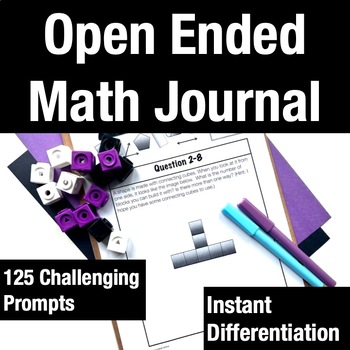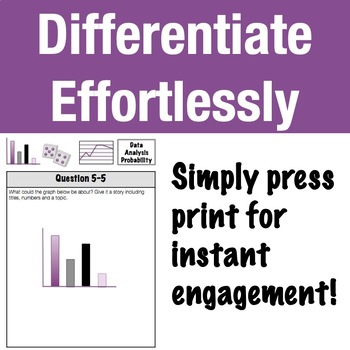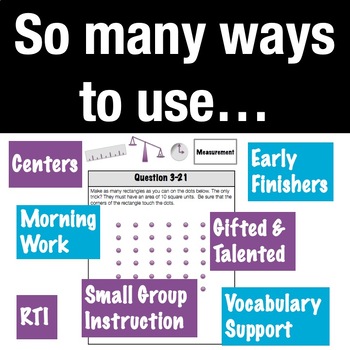Open Ended Math Journal Prompts- Differentiation, Fast Finishers, and Enrichment
- PDF
What educators are saying
Description
Finally, no more stressing about what students should do for independent work time! This math journal just needs to be printed for instant differentiation, giving you open ended math investigations.
You will have activities for students who have already mastered what you've taught (enrichment), or for early finishers. The best part is there is no prep, just print and you're ready to go. These are also fantastic prompts to promote student to student discourse.
Open ended problems encourage students to think outside the box, find multiple answers, and to challenge themselves. I've used these prompts for years to promote math talk in the classroom, and finally put them all together into a large document, organized by the math strands. There are 125 prompts (25 in each strand) for a years worth of work! The prompts have been aligned to the third and fourth grade Common Core State Standards in the table of contents. In addition, they could be used as a review or as an intervention activity for struggling fifth graders.
The strands covered include:
* Number and Operations
* Geometry
* Measurement
* Algebra
* Data Analysis and Probability
1. What is open ended math journaling?
Math journaling is a great way to get students to write to explain their thinking. Each entry in the journal is an open ended question, focused on a specific strand of mathematics.
Open ended questions are used to help students explain their thinking, meaning that more than one answer could work. That is why this type of math journaling is perfect for differentiating in your classroom.
It is very important to encourage multiple answers, and to expect students to challenge themselves with their thinking. When you build in share time, this happens naturally.
2. How and when should I use this journal?
There are many ways that you could use this type of activity as a(n):
- activity for gifted leaners.
- center activity.
- writing lesson for making bullets, lists or to work on the trait of organization.
- early finisher activity.
- math lesson warm ups.
- math talk exercise (building in share time can be very powerful).
- formative assessment.
- small group work for guided math.
- homework for students to share with parents/family members
There are so many ways to use this activity, especially since it differentiates so naturally!
3. Tips for preparing the journal:
I like to print this entire book back to back and then bind it. That way the students can use it all year, and it will be in a more durable format so that students can flip through it. If this is not possible, you could always print them as you need them. All of the pages have one problem on them with workspace underneath it so that students feel compelled to write and/or draw freely!
The prompts could also be projected for the entire class to see.
I have also written the prompt on an easel page (as a center) to encourage students to solve it, and record their thinking to promote math talk in the classroom.
In the preview, you can see sample problems in each strand!
If you like this type of thinking, check out:
Open Ended Word Problem: FREE Doggy Dilemma
Open Ended Word Problems (My best seller!)
Holiday Version - On Stage! Open Ended Performance Task
Presidential Birthday Statisticians: Open Ended Performance Task





